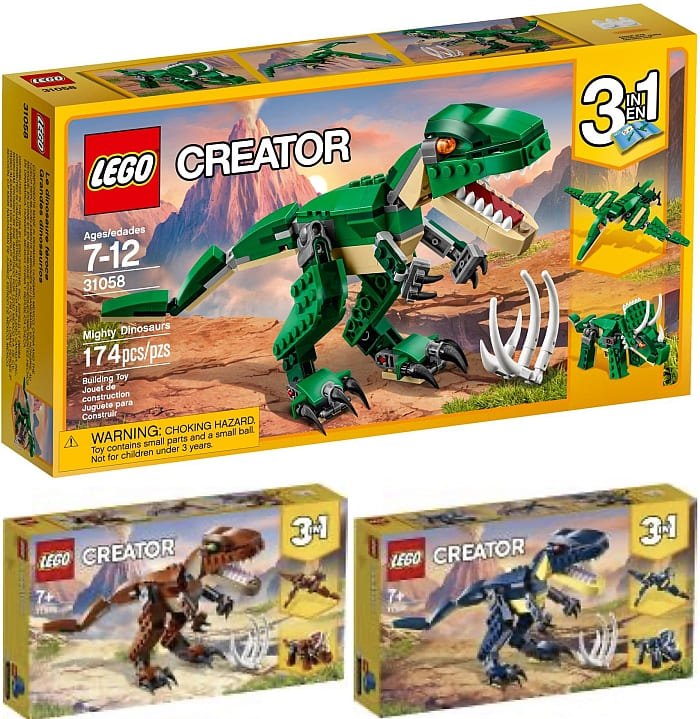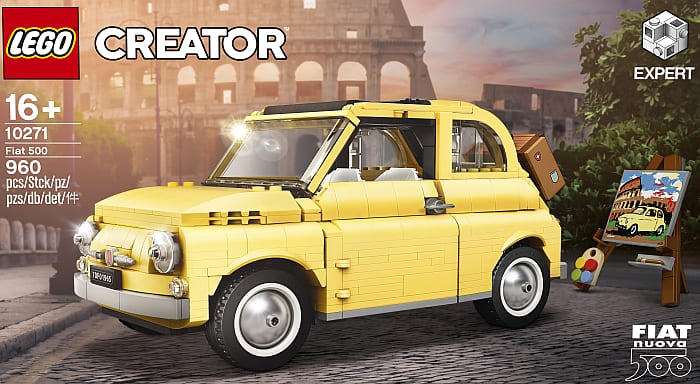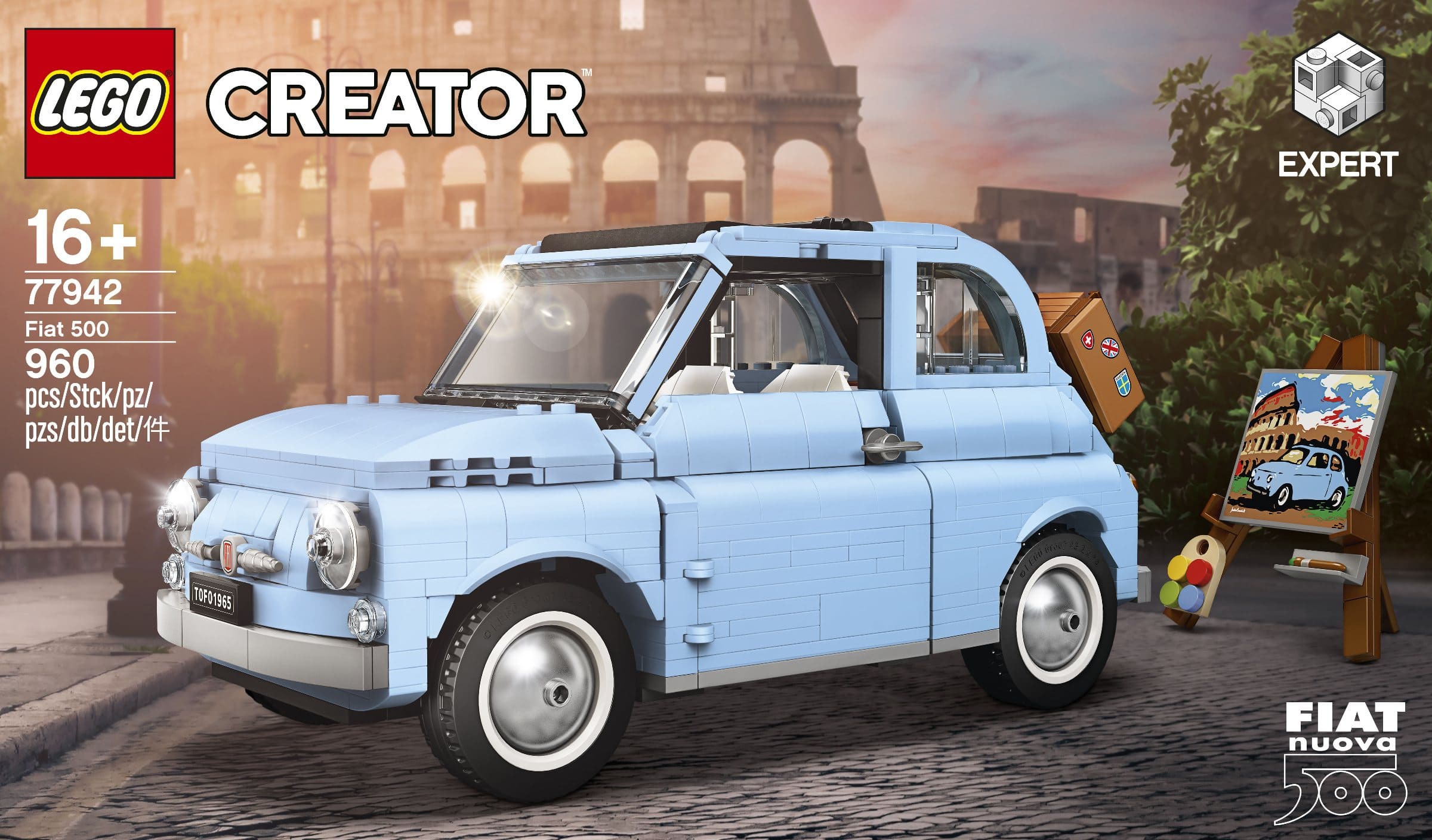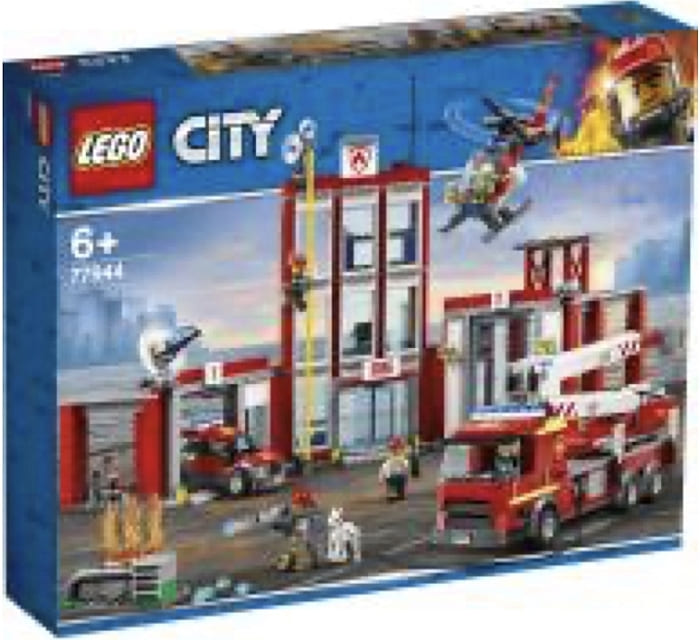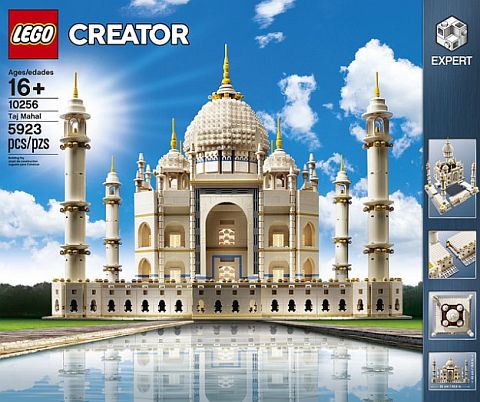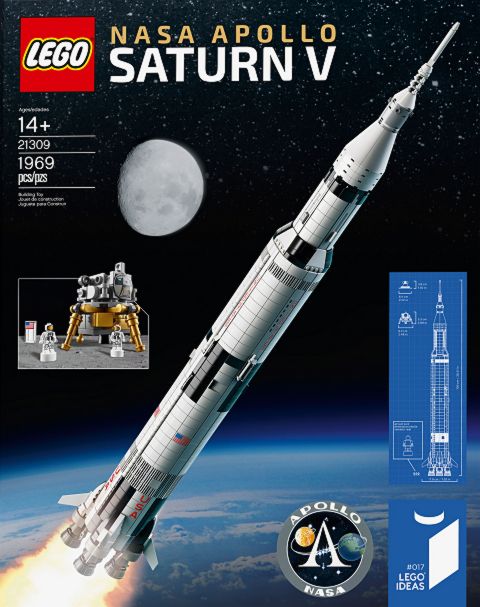The LEGO Ideas team recently ran a contest for creative LEGO photography, with the winning entry becoming featured on the front of a new 1,000-piece puzzle produced and distributed by Chronicle Books. There were several categories to enter; Space & Astronomy, Nature Scenes, Retro, and Architecture. LEGO Ideas judges selected 10 of what they felt were the best entries (40 total), which then went to the crowd vote phase. There will be winners in each category as well as a grand prize winner, but they weren’t announced just yet.
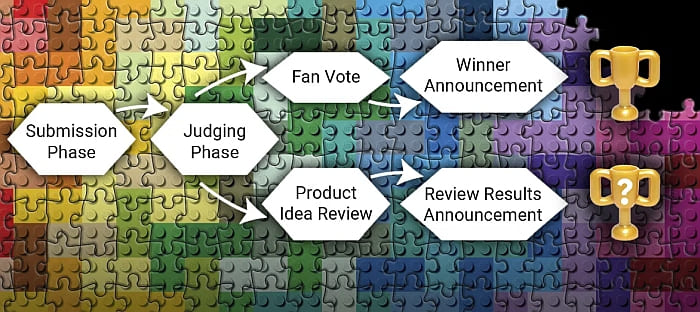
However, I would still like to talk about this contest, because the entries are so impressive. The trick is that this isn’t just a standard building contest, but also a photography contest. In other words, contestants had to build something impressive, then arrange it and present it in a well-composed picture. And not just any picture, but a picture that could potentially become a puzzle. That’s a lot to think about and plan for!
Chronicle Books gave some guidelines of what works well for puzzle pictures. They advised contestants to feature a clear unifying theme or storyline, and make use of patterns, gradation, and/or repetition. They should also include a variety of different colors and not too much empty space or large borders. The picture should have enough variation to be challenging as a puzzle for fans 9+, and of course, have sharp image quality.
Below, I have included some of my favorite designs in the four different categories, and if you would like to see the full list, visit the LEGO Ideas Contest Page.
LEGO IDEAS PUZZLE CONTEST – SPACE & ASTRONOMY
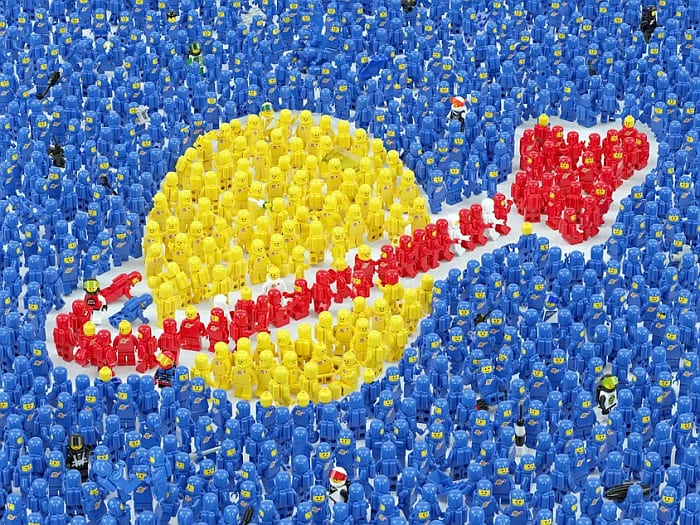
“The closer you look, the more you will see! I thought that the iconic space logo would be a great candidate for a puzzle. I wanted to create something that would be challenging but not boring, so I have packed this image with dozens of things for a puzzle builder to discover along the way. Within this image, there are minifigure accessories, spaceship parts, lots of mini scenes, and things that you might not even notice until you see it on a puzzle piece, such as a blue spaceman with yellow hands/no gloves, or a guy with his helmet stuck on backwards. I chose this scale because I wanted the minifigures to be life-size in the image when the puzzle is built. They may look tiny in this picture, but if this was a 25 inch puzzle then the minifigures would actually be 1:1 scale. Having them this small also allows for them to still look detailed in a 350dpi render.”
Entering the Universe of Creativity by AJBuster
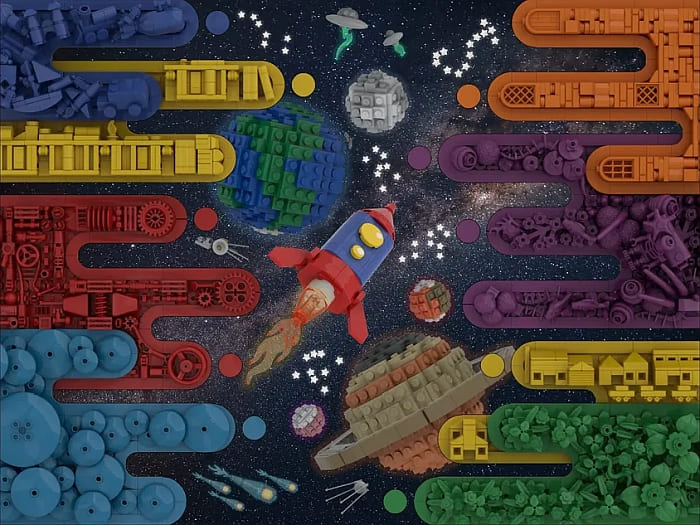
“Come take a seat in my rocket ship and let me take you to a wonderful place. I’ll take you to an entirely different universe. A universe where you can forget about your troubles for a while, where you can creatively express yourself in any way you wish, where imagination runs wild, and where friends are aplenty. Let me take you to the universe of LEGO.”
LEGO IDEAS PUZZLE CONTEST – NATURE SCENES
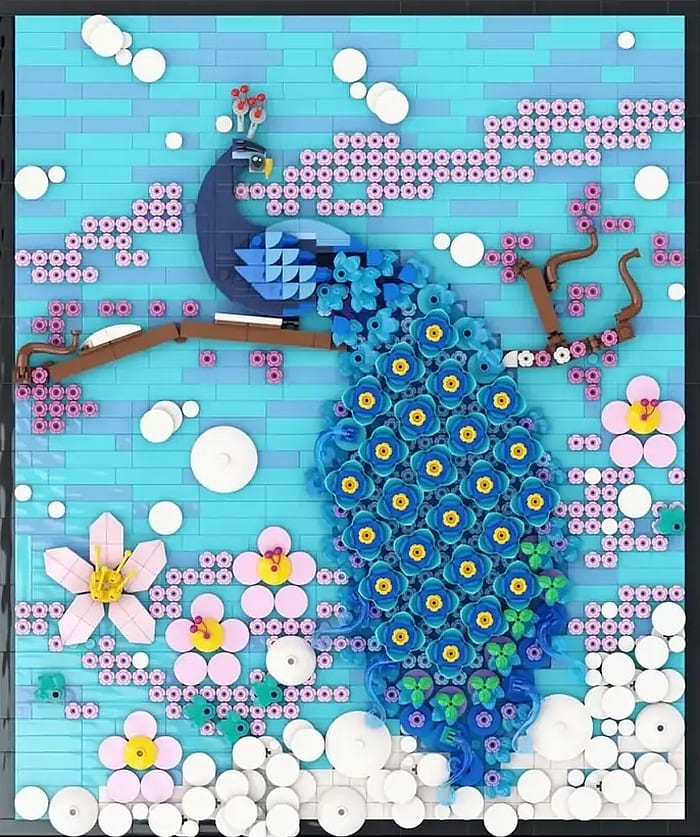
“In this oil-painting-like LEGO creation, I present you the scene with a colorful peacock standing on a plum tree during the first snow. You may have spotted that the peacock is made by using LEGO plants, flowers, grasses, and leaves. I think using nature elements to make the shape of the peacock demonstrates that animals and nature are interrelated and interdependent. Why I choose to present the scene of first snow with plums? Because it shows the strength of nature; even in the snow, plums can bloom. Be strong, is the message I got from it. The peacock is one of the most beautiful animals in the world. The beauty of peacock is multiplied when it spreads its wings and shows its true colors. Each peacock feather is flawed, yet together they create something beautiful. It reminds me not to be afraid of who you are; be strong and proud of yourself, beauty is just that simple. To me, the beauty of nature is as simple as it can be.”
The Deer by Les Briques de Loïc
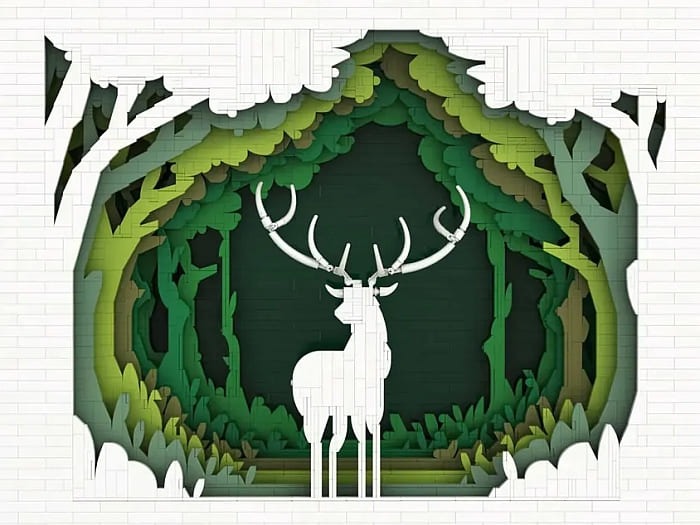
“My inspiration for this construction comes simply from the art of cut paper.”
LEGO IDEAS PUZZLE CONTEST – RETRO
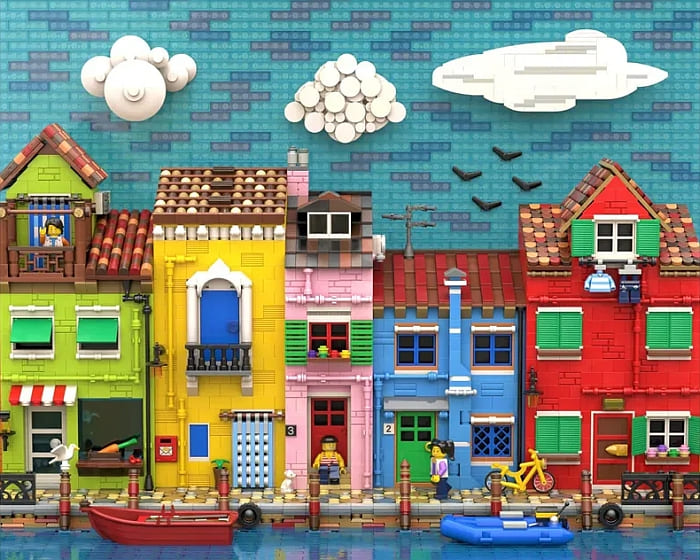
“Venice and its magical environment have always been sources of inspiration for all forms of artistic expression. This is my little contribution to the long list: a LEGO render inspired by Burano, a picturesque old-time island of the Venetian lagoon, near Murano and Torcello. The town is known among artists for its brightly colored homes. Thanks to the vivid colors and the vintage atmosphere, I think this subject would be perfect for a LEGO jigsaw puzzle!”
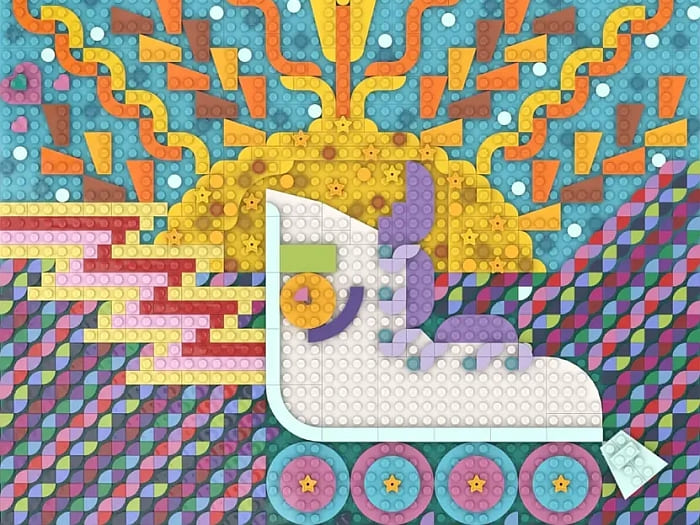
“With bright, joyful colors and a fun free-wheeling vibe, Retro Roller invokes the ecstatic energy and loud expressiveness of the 1970’s and 80’s. With Retro colors in fun, arcade-style patterns, the speedy focal inline skate, and a gorgeous warm sunburst horizon, puzzle enthusiasts and Lego lovers will lose themselves in nostalgia for a bigger, bolder, brighter time!”
LEGO IDEAS PUZZLE CONTEST – ARCHITECTURE
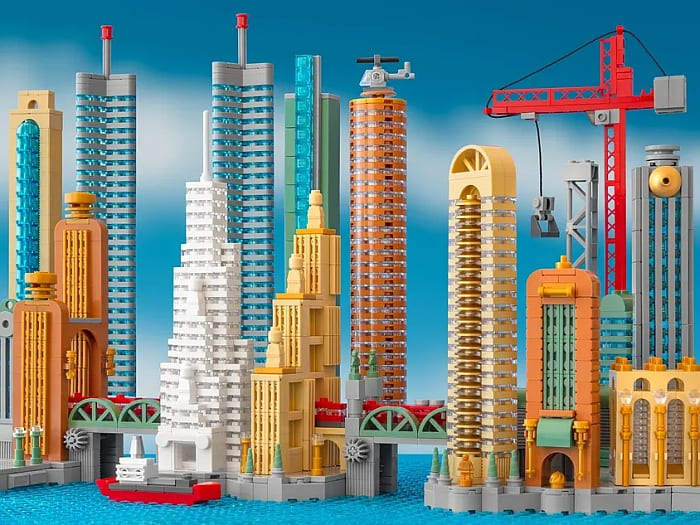
“A city rises beside the shore, moving through architectural styles as it climbs ever higher towards the sky. The essence of LEGO, jigsaw puzzles, and cities is putting something together piece-by-piece. Enjoy the many themes of building in this puzzle.”
The Arts and Quilt Building by WhyWall

“The Arts and Quilt shop that occupies part of the lower level of this building has inspired the whole building. After many years the whole building has transformed into a work of art all of it’s own. The building resembles a patchwork quilt full of colors and patterns.”
As you can see, this contest is full of creative and beautifully designed projects that would also make enjoyable puzzles. Again, if you would like to see the other entries, visit the . And you’re also welcome to share your favorites in the comment section below!
And you might also like to check out the following related posts:


